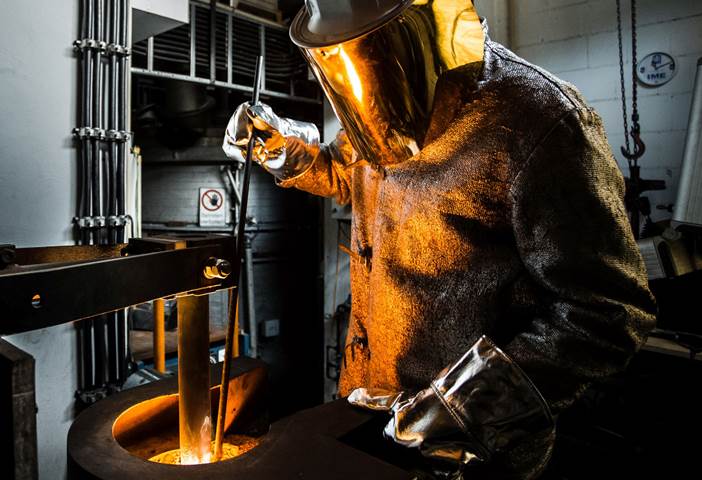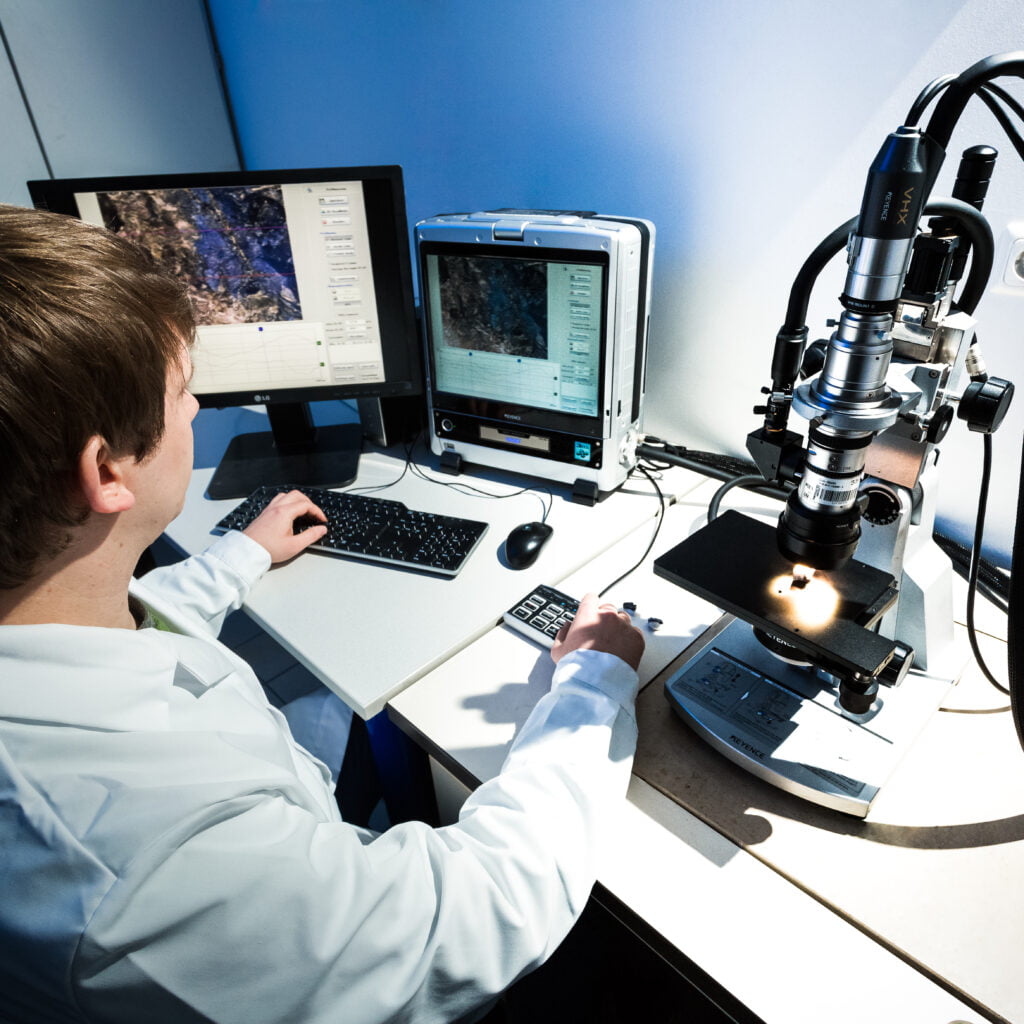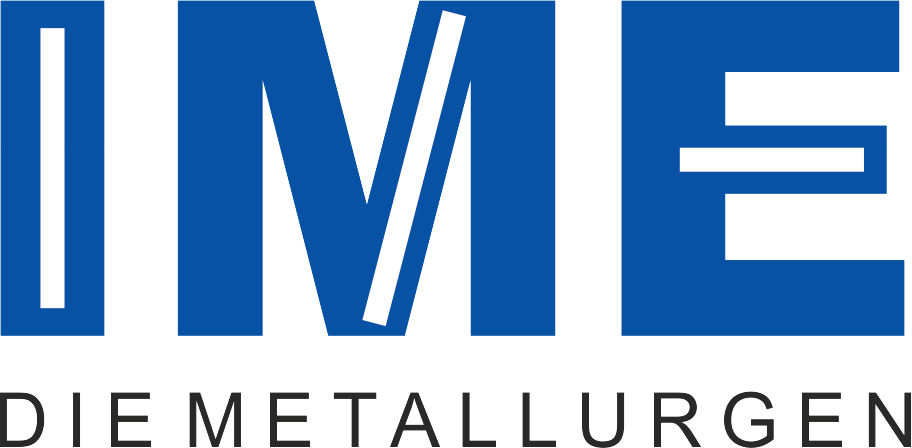Research » Waste Treatment and Primary Metallurgy
The primary production of metals is usually accompanied by by-product residues. These residue streams are a potential problem due to environmental concerns. Contained in these residues are valuable metals in lower grades than the primary production source. The IME is seeking means to exploit these vast secondary resources for value reclamation through development of innovative processes.
The focus areas include and are not limited to the following: slag cleaning for recovery of precious metals, landfill mining to recover metals and plastics, red mud processing for recovery of high value metals such as Sc and Ga. Inertization of slags is another large research focus. Metallurgical slags can be modified so that they may be used e.g. as cement additives or as road building materials. This “zero-waste” approach contributes enormously to a sustainable metal production, which is actively propagated by IME in R&D projects and teaching.
The processing of these materials at IME is predominantly undertaken by pyrometallurgical means. The facilities at IME for processing of the aforementioned resources comprise laboratory scale and demonstration scale furnaces and converters. Activities within IME in this area include thermochemical process modelling, high temperature experiments to validate the theoretical basis.
Alumni:
- Dr.-Ing. Marcus Sommerfeld
- M.Sc. Buhle Xakalashe
- M.Sc. Christian Dertmann
- M.Sc. Jil Schosseler
- Dr.-Ing. Kilian Gisbertz
- Dr.-Ing. Jörn Böhlke
- Dr.-Ing. Florian Binz
- Dr.-Ing. Jürgen Schlimbach
- Dr.-Ing. Jackson Rodriguez
- Dr.-Ing. Daniel Schmitz
- M.Sc. Magnus Sievers
- Dr.-Ing. Ashour Owais
- Dr.-Ing. Graciela Mendez
- Dr.-Ing. Yiqian Ma
- Dr.-Ing. Christoph Kemper
- Dipl.-Ing. Erik Hecker
- Dr.-Ing. Andreas Lützerath
- Dr.-Ing. Frank Kaußen
- Dr.-Ing. Marco Zander
- M.Sc. Gunnar Hovestadt

Project List
- SMART – Application of Artificial Intelligence for wastewater treatment processes in the West Balkans countries
- MeteoR – Mechanical-Thermochemical Process Combination for the Recycling of Fine Fractions from Waste Treatment Plants
- Solar
- HARARE – Hydrogen as the reducing agent in the recovery of metals and minerals from metallurgical waste
- RECMAG- Sustainable Recovery of Rare Earth Elements (Nd, Dy,Pr) from spent NdFeB magnets
- PhöMixBeton – Process for the production of alkali-activated binders by melting mineral residues for an ecologically controlled mix design of concrete
- Demonstration project for process parameter optimization for the melting of synthetically produced manganese nodules in an electric arc furnace with continuous operation
- Development of a energy efficient process through simultaneous melting of SiC-ceramics and WEEE for an optimised recovery of precious metals
- Slag valorisation for multi metal recovery and mineral resource production
- CO2MIN – CO2 Capturing through Mineral Raw Materials – Production of Marketable Products with Simultaneous CO2 Sequestration in the Cement Industry
- Optimising the Tantalum Recycling Process through Conditioning of Raw Materials, Process Automation and Material Logistics
- EU Training Network for Resource Recovery through Enhanced Landfill Mining
- European Training Network for Zero-waste Valorisation of Bauxite Residue (Red Mud)
- ResourcesKolleg.NRW Resource extraction from mixed waste fractions
- Loss-minimized metal recycling from waste incinerators by means of sensor-assisted sorting – VeMRec
- Dismantling and avoidance of red mud dumps
- Electrorefining of slags based on copper
- Reducing the environmental footprint of primary aluminum production
- Extraction of metals and mineral products from landfilled residues of the mining industry in the Mansfeld area
- Prevention of metal losses in metallurgical slags using copper as an example
- Laboratory for thermophysical properties Expansion to a precisely adjustable atmosphere and increased precision
- Discard of fine particles
- Development of an operational Plan for Environmental Protection from Dusts
- Integrated Treatment of Industrial Wastes towards Prevention of Regional Water Resources Contamination
- Development of recycling processes for low-magnesium-containing residuals
- Resource-oriented overall consideration of material flows of metallic raw materials
Publications
| Year | Publications |
|---|---|
| 2025 | article in scientific journal Metals 2025, 15, 1262. https://doi.org/10.3390/ met15111262 |
| 2025 | book chapter www.mdpi.com/books/reprint/11729 |
| 2025 | article in scientific journal The Role of Silicon During Solidification Process of Cast Al-Si-Mg Alloys. Materials 2025, 18, 5033. https://doi.org/10.3390/ ma18215033 |
| 2025 | article in scientific journal Engineered Artificial Minerals (EnAMs): Concept, Design Strategies, and Case Studies. Minerals 2025, 15, 1129. https:// doi.org/10.3390/min15111129 |
| 2025 | book chapter Metals, ISBN 978-3-7258-4681-8 (Hardback), ISBN 978-3-7258-4682-5 (PDF), https://doi.org/10.3390/books978-3-7258-4682-5 |
| 2025 | article in scientific journal Minerals 2025, 15, 1011. https://doi.org/10.3390/ min15101011 |
| 2025 | article in scientific journal Alexander Birich et al, World of Metallurgy – ERZMETALL 78 (2025) No. 3 |
| 2025 | article in scientific journal Materials 2025, 18, 4622. https://doi.org/10.3390/ ma18194622 |
| 2025 | congress or congress paper 21st European Symposium on Fluorine Chemistry 3-9 August 2025 |
| 2025 | congress or congress paper 21st European Symposium on Fluorine Chemistry 3-9 August 2025 |


